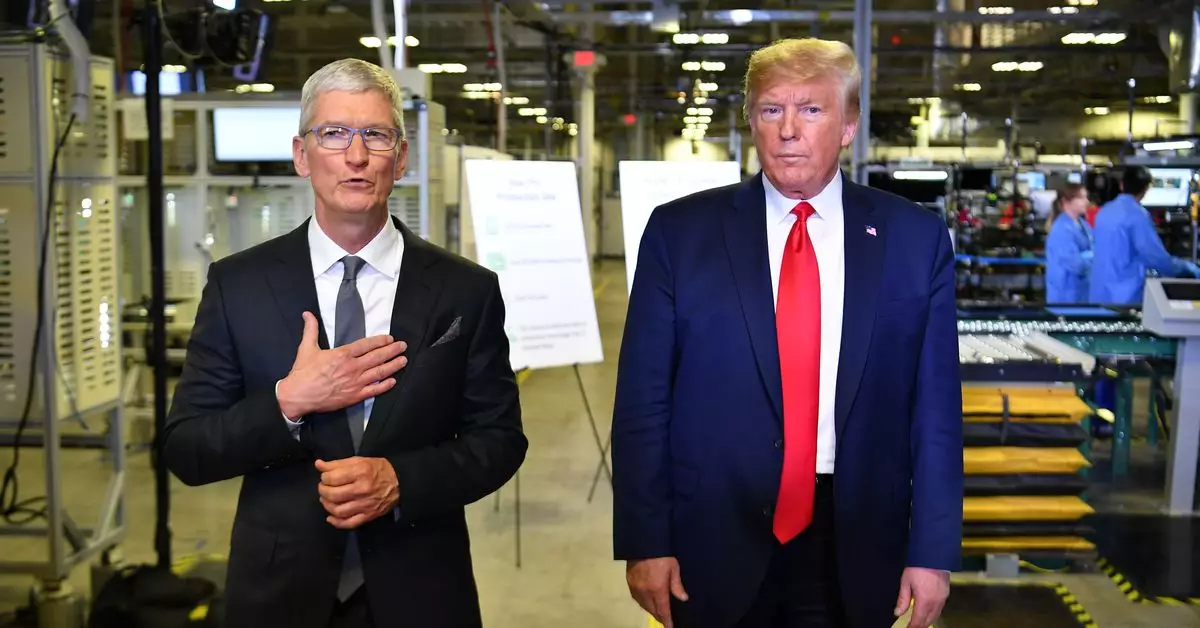In the realm of technology and politics, few relationships have been as scrutinized as that between Apple CEO Tim Cook and former President Donald Trump. While many tech executives have attempted to establish connections with Trump, Cook’s approach stands out for its effectiveness. A recent analysis published by the Wall Street Journal sheds light on how his personal strategy allowed him to influence key policy decisions during Trump’s administration, particularly regarding tax changes in 2017 and tariff regulations in 2019. Cook’s methods reveal more than a mere business transaction; they highlight the intricate dance between influence and political favor.
What sets Cook apart from his counterparts is his preference for direct engagement rather than relying on traditional lobbying tactics. By opting for personal phone calls and informal meals instead of formal meetings with lobbyists, Cook carved a unique niche that facilitated open dialogue with Trump. This straightforward approach allowed him to present Apple’s interests in a digestible format, focusing on one compelling data point at a time. Such simplicity is fundamental in an environment often rife with complex issues and competing agendas. The Journal notes that by keeping discussions concentrated, Cook effectively avoided topics that might detract from his primary objectives, consequently enhancing his influence.
The success of Cook’s strategy can also be attributed to his capability to identify and leverage mutual interests between Apple and Trump’s policy initiatives. This not only helped craft a favorable middle ground but also provided the Trump administration with the political cachet it craved—an ally within the tech industry. By not contradicting Trump publicly, even when he misrepresented certain facts about Apple’s operations, Cook ensured that their rapport remained intact, further giving Trump a sense of validation. The alignment of Cook’s goals with those of Trump opened avenues that other tech leaders could not navigate.
The article underscores the desire among other tech titans to replicate Cook’s successful engagement blueprint. Despite their high profiles, individuals such as Boeing and FedEx leaders have attempted similar tactics with varying degrees of success. However, simply imitating Cook’s method may not yield the same results, as personal rapport and timing are invaluable. Notably, Elon Musk’s relationship with Trump serves as a reminder that aggression and loyalty to a political campaign can also open doors, suggesting that variations in approach are essential.
As the tech world continues to grapple with political alignments, Cook’s rapport with Trump may serve as a case study illustrating how personal connections can result in favorable outcomes. The dynamics of technology firms engaging with political figures will evolve, but the fundamental concepts of strategic simplicity, mutual interests, and direct communication will likely remain pivotal. As technology leaders consider how best to navigate this landscape, understanding the nuanced playbook that Cook employed with Trump may inform their future strategies in a complex political ecosystem.

